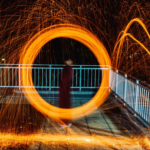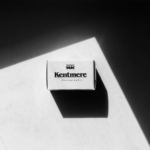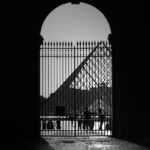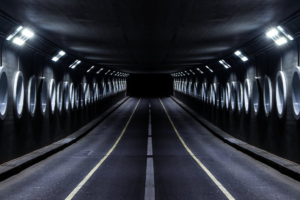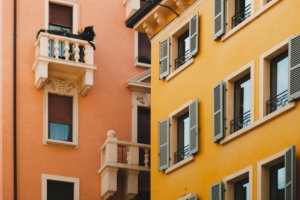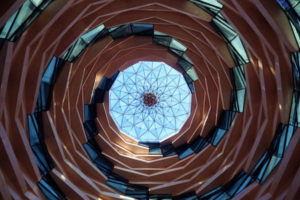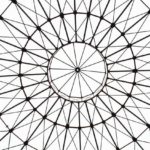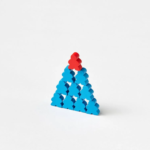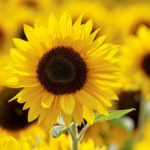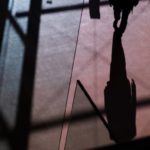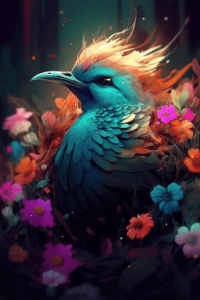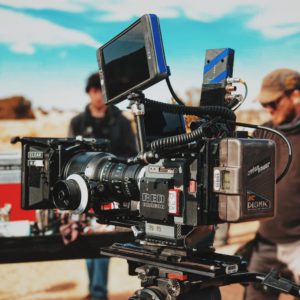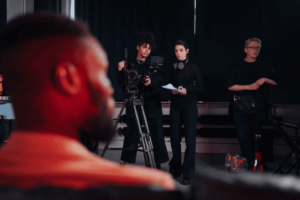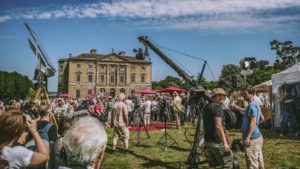Photography is a creative art that you can master when you get an artistic vision. To establish your creativity and refine your artistic vision, you need to understand how to compose an image. Before that, you have to clearly understand what composition is and how it differentiates and projects your style of photography. Here in this article, you will find the details about the depth of composition photography. Hence, dive in to learn more.

What is a Composition in photography?
Composition refers to the way you position the elements of a scene within the frame such that your photograph tells a story or conveys a message. Hence, it gives a structure to your photo. It also determines how your image appeals to your viewer and attracts them. Although there are no definite rules you can follow to compose a photograph, specific established guidelines help you convey your emotion or idea within the frame. You can use these to create stunning compositions that have already been time-tested in the field of art. In addition, these techniques come in handy to express your vision through your photographs, provided you familiarize yourself with them. The composition technique relies on elements that play a vital role in determining the quality of your image. Dive in to learn more about the features of the composition.

The Elements of Composition
The elements of composition are those that are available in your photographic scene. Therefore, you can leverage the functional features to enrich your image and create a stunning composition that fits your photo. The essential elements of composition include:
1. Lines
You can use lines to draw your viewer’s attention and divert their focus to specific parts of the frame.
- Leading lines: These lines directly point to your subject and lead your viewer to it. E.g., Rivers and streams are excellent ways to integrate leading lines into the image.

- Converging lines: A group of edges that point toward the center of the frame from all directions. E.g., edges from numerous buildings or trees.

2. Shape
A shape is formed when a line or more lines close or connect. They are two-dimensional and can define the structure of an object. When you compose your image using shapes, you can add exciting details and give a unique look. This is possible because you can transform a familiar body into an unfamiliar object based on the photographic perspective. In addition, when different shapes intersect and overlap, they combine to form a new shape. Photographically, a silhouette is the purest form of Shape. There are two types of shapes:
- Geometric: circle, square, triangle, dodecahedron, and so on.
- Organic Shape: the outline of a bird, elephant, flower, tree, etc
3. Form
A three-dimensional shape is called a form. In a photograph, a form is often portrayed only with two dimensions. Hence the photographers have to show the depth of an object through their photography skills. For example, they often capture the shadows of an object or showcase the difference in tones to show its depth. The two types of the form include:
- Geometric: sphere, cube, cone, cylinder, and so on.
- Organic: objects that surround us in our three-dimensional world.
4. Texture
The texture is the visual appearance of an image. In photography, shadow is used to emphasize texture. Additionally, you can show a texture with the help of a pattern. For example, objects with a smooth surface are identified with reflections, whereas those with a rough surface are devoid of it. Further, your viewer will be able to feel a texture only when he is already aware of it. On the contrary, he will not be able to handle it.

5. Color
A color is characterized by hue, value, and saturation. Coloring describes the shade of the color. Value refers to the brightness or darkness of the paint, while saturation pertains to the intensity of a color. Initially, you need to look for tints in a scene and decide whether to include or exclude them from your composition. You can choose this based on how the use of colors highlights your subject and conveys the mood of your image.

6. Space
When forms and shapes are arranged in a frame, they occupy space. This space surrounding the elements in a photograph is called negative space, an interesting compositional element.

Principles of composition
Rhythm
When you fill your frame with repeating patterns or shapes randomly or repetitively, you create a sense of movement called rhythm.

Balance
Suppose you divide an image into two halves. In that case, the image components can either duplicate on both sides of the image or consist of dissimilarly placed elements that attract your viewers.
Proportion
Proportion is the technique of adequately sizing or scaling the components of an image about each other and to the entire picture. For example, you can arrange the elements in your frame that highlight the difference in the proportion of their sizes.

Emphasis
Emphasis refers to the way you give importance to a subject within the frame intentionally. There are a variety of ways to highlight your intentional subject. For example, you can use a color different from other image elements. Alternatively, try playing with selective lighting or include leading lines and proportion or group the subject in a specific fashion.

Harmony
The harmony technique involves pointing out similar elements in the subjects of an image. Harmonious images highlight how different objects share similar characteristics and have a relaxing effect on the viewer.

Contrast
Contrary to the concept of harmony, contrast focuses on elements that differ from the rest of the image. These differences are highlighted to add life and interest to the picture. In addition, care must be exercised while integrating contrast, as it shouldn’t be overdone. It is instrumental when you want to arrest your viewer’s attention.

Movement
The technique of capturing moving objects using creative shutter speeds, panning, or zooming with the camera is called movement. Although a still image is devoid of movement, the subjects are captured while they move.

Gestalt Principles of Composition
The gestalt principles of psychology help photographers in composing the image. These principles explain how the human mind processes the things it perceives. Hence, photographers can use these principles to enhance their image’s perception effectively. These include:
Proximity
When two objects appear closer together, the human mind assumes that they interact. For example, here, the flower is close to the camera. The size of the object causes your eyes to perceive it as the lady’s skirt.

Continuity
When you capture lines or patterns that repeat, your eyes perceive them to prolong even beyond the frame. For instance, in the image given below, the chain seems to climb to the sky.

Closure
According to this principle, the elements of your image are arranged to project a different shape the mind perceives. For example, the image below projects a circular shape with a few cookies arranged in a specific manner. Hence, you can use this principle to create a lot of optical illusions.

Similarity
You can group objects of similar characteristics as the human mind quickly recognizes them. For example, you break down the below image into two parts, one of them unifying all the whole oranges while the other shows the sliced orange standing out.

Figure/Ground
This principle highlights your perception of an image from the ground and relates it to the subject. For example, in the below image, you perceive the stones from the ground and understand the stones’ position.

Symmetry
When arranging the elements in a frame, you can separate them equally with an imaginary line. For example, the below image can be divided equally into two identical halves, and each of them carries elements that are present in both halves.

Tips to Find the Right Composition
1. Inspiration and Learning to See
Photography is your creative expression of artistic vision. Hence, unless you train your eyes to look at other art forms, you will not be able to envision the composition of your image. For this purpose, you could either take a painting class or frequent visits to art galleries.
2. Do Your Research and Plan Your Shoot
To get a splendid photograph, you need to invest much of your time researching and planning your shoots. Doing your research about a location helps you find the appropriate moment and plan your shoot accordingly.
3. Arrive Early
Once you choose your location and fix your time to shoot, you need to arrive early to the spot to plan for your composition. Arriving early, allows you to experiment with unique perspectives and helps you react better when the shooting starts.
Composition Techniques
1. The Left to Right Rule
The left-to-right rule is based on the logic that our eyes move from left to right while reading. As a result, subconsciously, our eyes will search for images that constantly move in the same direction as our reading. Since this rule is contradictory to some countries where reading is practiced the other way round, you can consider it a general rule and bypass it as the situation demands. Nevertheless, it is one of the most accessible compositional techniques to use.

2. Rule of thirds
The rule of thirds is one of the straightforward composition basics. It helps create a balanced image and indicates the areas where your viewer’s eye wanders naturally. Hence, this rule breaks a scene into thirds horizontally and vertically, forming 9 equal rectangles. The point of intersection of these rectangles is said to be those spots where your viewer’s eyes tend to go. As a result, you need to place your main subjects at these points and click them to generate compelling images.

3. Rule of space
According to the space rule, you need to leave enough space in front of your main subject, especially if moving or looking away from the camera. This ensures you intrigue your viewers to know what captures the main subject’s attention. However, depending on the message you wish to convey through the image, you can make or break the rule.

4. Rule of odds
According to the rule of odds, capturing an odd number of subjects renders a balanced image. However, capturing your subjects in odd numbers less than 5 is preferred as these don’t clutter your image.

5. Golden Ratio
The golden ratio is a mathematical term that was applied to photography. You can use it for photographic composition in two ways. They include:
- Golden Grid or Phi Grid
- Golden Spiral or Fibonacci Spiral
Golden Grid or Phi Grid
The golden grid divides your frame into 9 rectangles, similar to the rule of thirds. However, the rectangles are not equal in size. Contrastingly, they are in the ratio 1: 0.618: 1. This means the rectangles in the center are smaller than the rest of it. The technique of the golden grid is quite an advanced technique of composition compared to the rule of thirds. When an image is composed with this grid, it gives a natural feeling to the viewer as it is commonly found in nature.

Golden Spiral or Fibonacci Spiral
The golden spiral usually begins at any corner of the frame and grows at the rate of the golden ratio. You can train your eye to look at the golden ratio by studying specific photographs in detail. In addition, the golden spiral is also highly prevalent in the environment.
6. Golden Triangle
The golden triangle is quite similar to the rule of thirds, but it divides the frame with a diagonal line that runs from one corner to the other. In addition, from the other two corners, two more lines are dropped to meet the diagonal lines at right angles. Hence, it gives rise to a series of triangles that helps you to introduce an element of ‘dynamic tension’.

7. Negative Space
The space surrounding your main subject in the photo is the negative space, whereas your main subject forms the positive area. Although monotonous, the negative space enhances your image’s visual appeal to your viewer.
Being the most powerful technique that contributes to your image’s composition, you can use negative space to:
- Draw your viewer’s eye toward the subject
- Create the correct relationship between the main subject and the background.
- Provide space in the photograph and prevent clutter.
- Define and emphasize the main subject.
- Portray an emotion or feeling
However, use this technique with diligence to reap its benefits.

8. Perspective
Change your camera angle to create stunning images. For this purpose, you can get higher, lower, or even lie down to capture a scene from an unseen perspective, making your picture fascinating.

9. Horizon Line
A line that runs across the photograph through which the horizon travels is called a horizon line. A natural line divides the picture but vanishes as the land or water meets the sky. It is used to communicate depth in a photo and emphasize subjects. Based on the emphasis, you can use the horizon line in different parts of a photograph.

10. Simplicity
An excellent way to approach composition is by following the rules of simplicity. For example, you must identify and isolate the subject of your interest among a plethora of subjects in an exciting scene. Following this, you must exclude the clutter in the scene to direct your viewer’s attention to the object of your interest.

11. Fill the Frame
If you happen to meet a majestic subject, you can fill your frame with the subject. This way, you will highlight your subject’s grandeur and convey it to your viewer.

Common Composition Mistakes and ways to fix them
1. Sloppy or Busy edges
While you photograph at a wide angle, ensure you leave some extra space. This extra space helps while editing the image. Also, when you want to get rid of distractions, a lack of space may force you to cut down on anything important.
2. Uneven Horizon Line
In some cases, even when your camera is placed at a perfect level, your images may contain tilted subjects at intense angles. In this case, straighten the horizon line while post-processing.
3. Not Making the Subject the Focus of the Frame
When you have chosen your subject, you must highlight it in your image to attract your viewer to it. For this purpose, ensure to fill your frame with your main subject and that it occupies space.
4. Subject Leaving the Frame
Since your viewer’s eyes will always follow the moving subject in your image, ensure to place them such that they are moving into the frame or looking towards the center. This will prevent your viewer’s eyes from moving away from the frame.
5. The Scene Feels Unbalanced
To balance a scene, slightly change the angle by moving towards the left or right of your main subject. In addition, you can even stoop down low to get a new perspective.
6. The Scene is Too Busy
When you’re trying to photograph your subject, your scene may be busy. In such a case, you can blur or test the bokeh effect for the background. In addition, if your composition is too broad, you can tighten the frame.
7. The Depth of Field Isn’t Right
If your images are not quite sharp, you may have issues with the depth of field settings. For this purpose, you can raise the aperture and shoot at f/16 or higher.
How to Improve Composition in Editing?
Vignette
A vignette helps you pull your viewer’s eye from the edges to the middle of the frame. Although the vignette improves your composition, you need to use it diligently to avoid distraction.
Cropping
Cropping helps you cut out unimportant or distracting elements in a scene. Hence, to crop your edges perfectly, you must shoot a little wider. This ensures you don’t miss out on essential parts of an image.
Converting an Image to Black and White
Although color images are visually appealing, they look drab and uninteresting at times. In such cases, you can convert these images to black and white to make them stand out and achieve surprising results.
Other Ways to Improve Your Compositional Skills in Photography
Step 1: Take a Workshop or Hire a Photographer
Photography enables you to shoot a scene in different ways. You may have been to the same place as an amateur, but the photographer will project it quite differently. Naturally, this makes you wonder about how the scene has been shot. To know more about the techniques of a particular photograph, you need to interact with those photographers. For this purpose, either you can hire a photographer or be a part of the workshop to learn more about improving your compositions.
Step 2: Look at Other Photos for Inspiration
Exposing yourself to a wide variety of photographs, both good and bad, helps you analyze your composition point. Good pictures tell you how well you can project a shot, while bad photographs instigate you to explore and portray them better. Since it’s a win-win in both ways, always look out for seeing different types of photos.
Step 3: Be Patient
Once you are well exposed to different photos, you will begin investing your time in shooting through various scenes. At this stage, you would have mastered the camera settings quickly. However, composing a photo takes time, as it entirely depends on your artistic vision. Therefore, your creative vision develops depending on your practice and patience in mastering the art.
Step 4: Practice
To get a hold of composition, you need to click as much as possible. For this, you need to visit places of interest and shoot to improve your composition. However, even with the absence of a camera, continue training your eye and composing images in your mind. This way, you can prepare yourself to compose great photographs.
Videos
7 simple photo composition techniques to improve your photography
Composition- The most important thing in photography
Final Thoughts
Thus, you can master the art of composing an image with practice and patience. As an amateur photographer, you may find yourself at a disadvantage in several circumstances. But you must persevere, have an excellent feedback mechanism with your network of professional photographers, and focus on improvement. This way, slowly but steadily, you will gain mastery over your niche.
